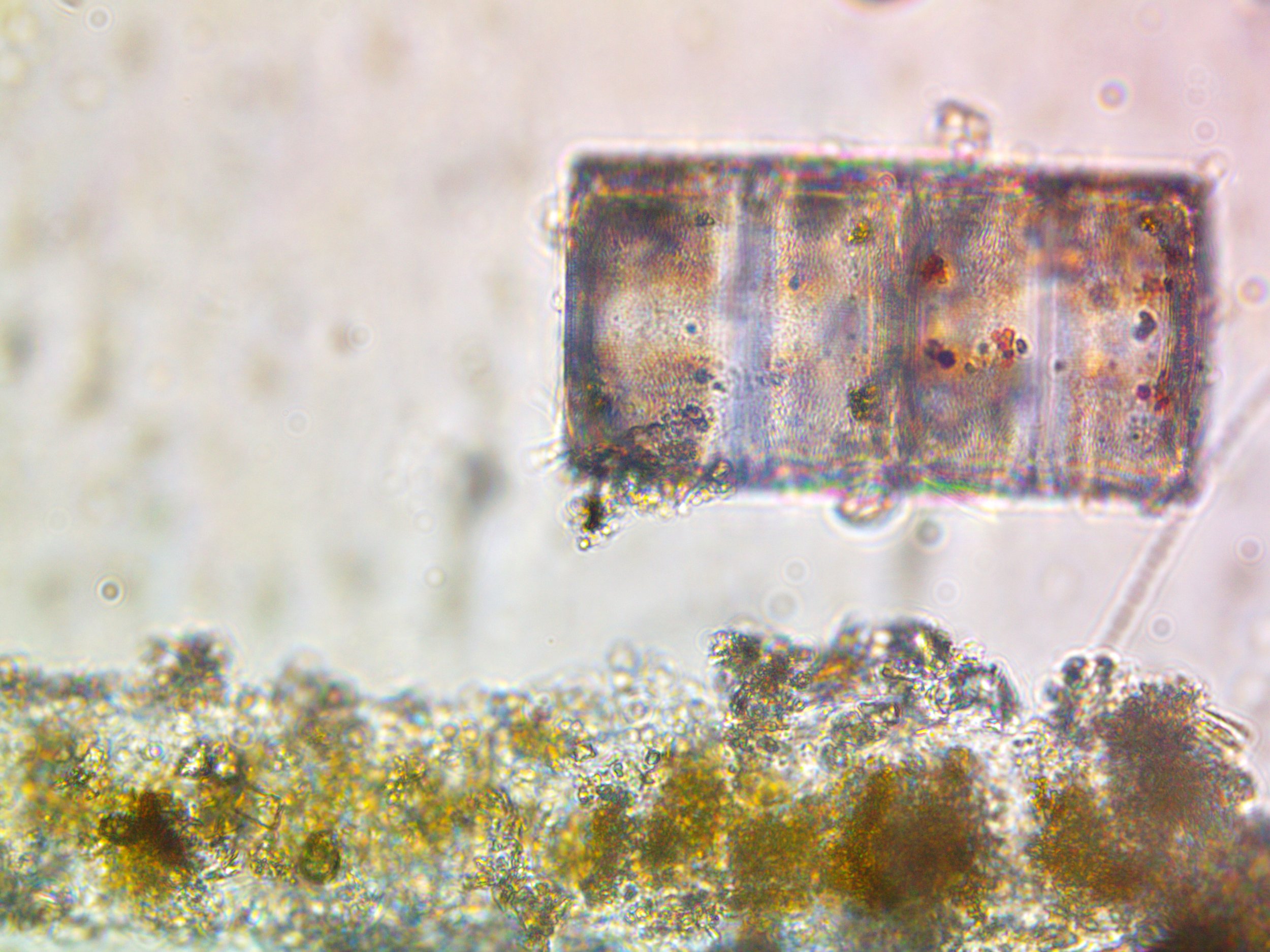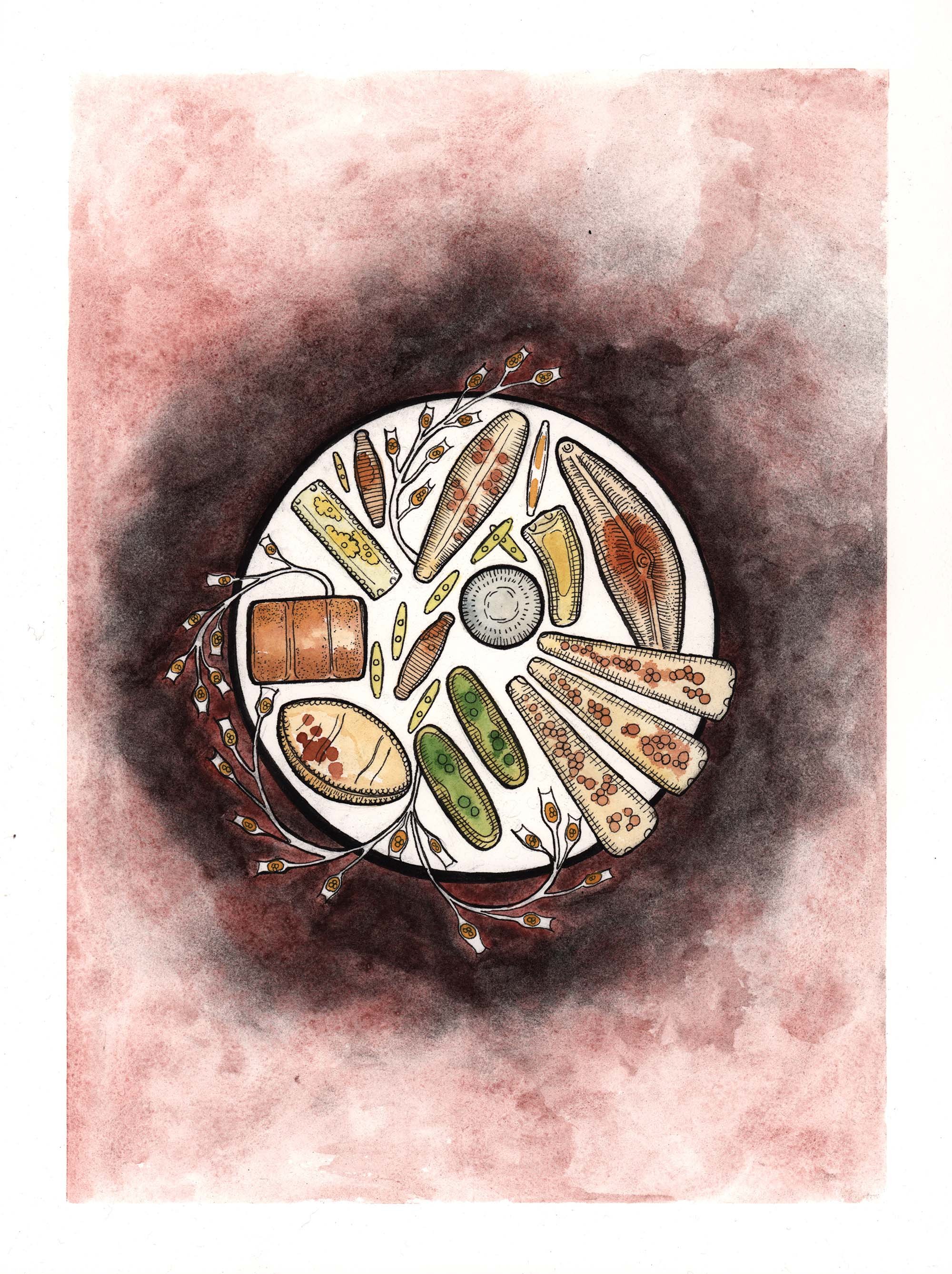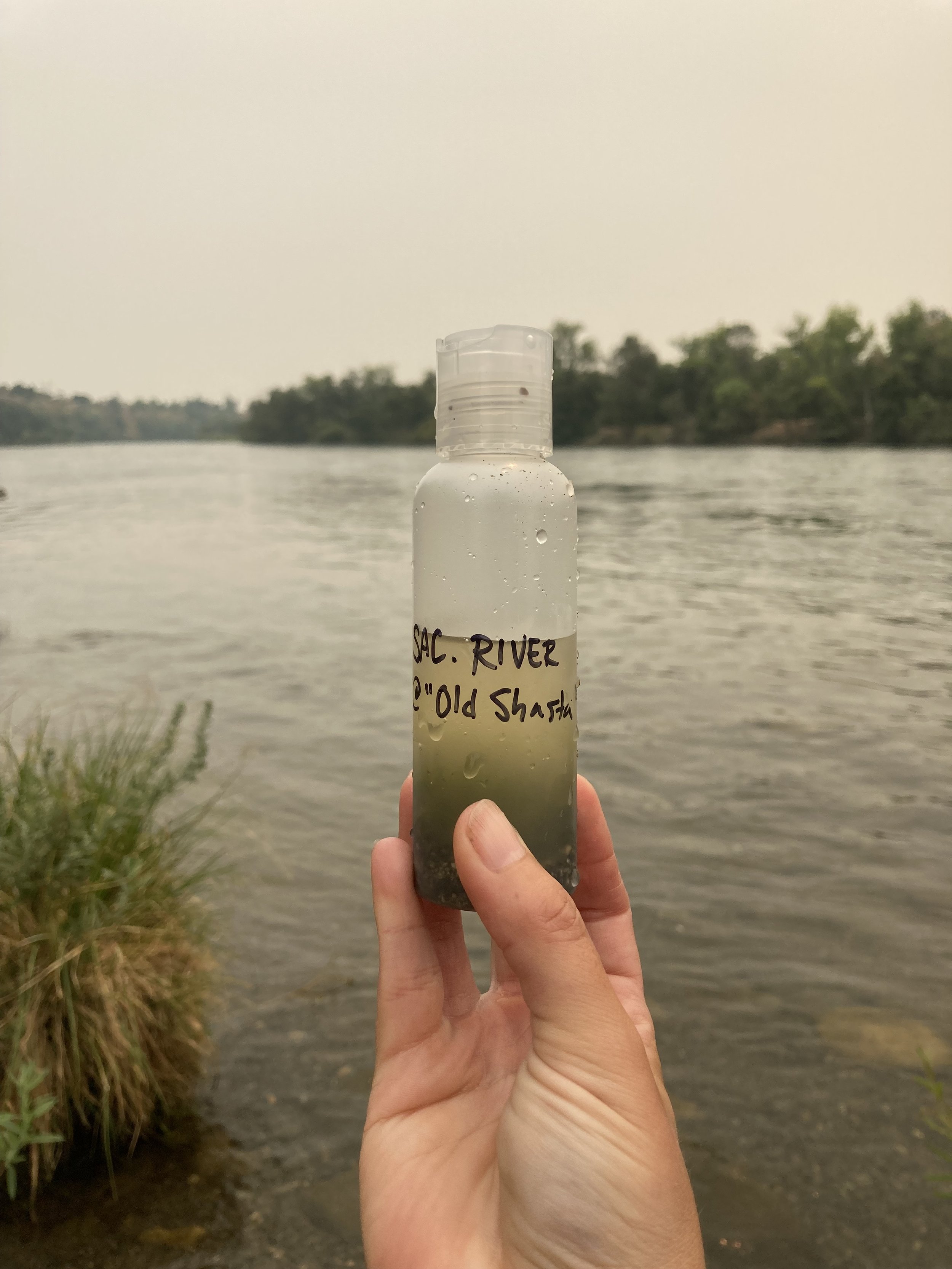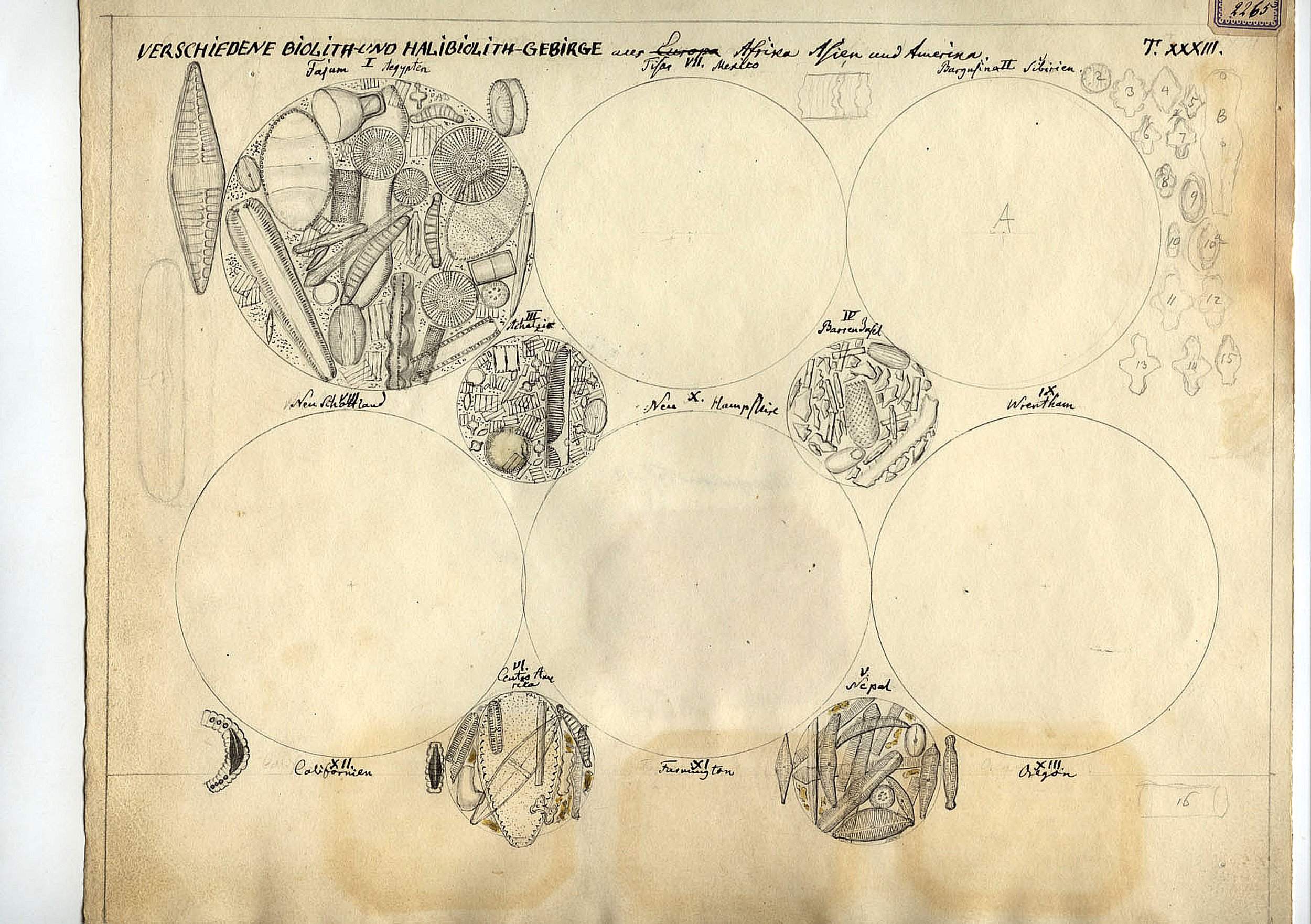The Sacramento River at
Old Shasta City Ghost Town, California
The Sacramento River at Old Shasta City Ghost Town, California, 2022 — Ink, watercolor, algae pigment, and forest fire charcoal on paper
Another location Sacramento River, Shasta, variously called Old Shasta, Shasta City, Shasta (not to be confused with the modern Mt. Shasta, California) is now a ghost town and historic park near Redding, California. This sample is listed as ‘conferven’ so it likely came in the form of dried or bottled filamentous algae.
California Chasta city Alexander Rosé J.Ch. Ehrenberg 1709 Californien, Shasta City 1. Alexander Rose. Conferven. Juli 1852
This sample also has Alexander Rosé associated with it and seems to be collected on the same expedition as the Sacramento River at Monroeville and the other Sacramento River samples.
Shasta is seen west and north of Redding, California in this 19th century era map. Britton & Rey's Map Of The State Of California 1857
Shasta City was once a mining boom town, placed along the Sacramento River as a trading post that served the northern mining concerns as well as the home of the Modoc tribe. Shasta was eventually bypassed by the rail lines and declined after most of the population center moved to nearby Redding, California.
Shasta is today a preserved set of gold rush town ruins. The Keswick Reservoir and Dam have radically changed the flow of the Sacramento River in this area, making river access difficult. The Carr Fire also heavily damaged the area in 2018. Because of these limitations, I collected this sample near Redding.
The Shasta sample was taken under the Sundial Bridge at Redding, California. Heavy wildfire smoke can be seen in the background of this image.
Dr. Ehrenberg’s observations
Images of roundels with various microorganisms, including a seemingly unfinished California composition. Image used with permission from the Natural History Museum of Berlin.
Unfortunately, Dr. Ehrenberg’s collection does not have extensive illustrations from these samples. Many of the assemblages we have in the collection were produced for earlier published works like Mikrogeologie, published in 1854.
All Californian illustrations seem to depict marine diatoms in other sample collections, so a direct specimen study will be needed to compare the samples.
My observations
Since the artistic record here has holes, my samples cannot be directly compared to the historical illustrations. A Diatom Correspondent has collected samples that are closer to where the Old Shasta dockyard would have historically been near the Keswick Dam which I will review in the future. I believe the sample collected near Redding is reflective of the general microbiome of the area.
This sample contained beautiful golden algae, Cymbella mexicana, Surirella (possibly Surirella undulata) and Gomphonema are present in this sample.
The Sacramento River from Redding looking west. The river is very rapid and wide at this point, with the shore made very steep by the upstream dam and reservoir.












